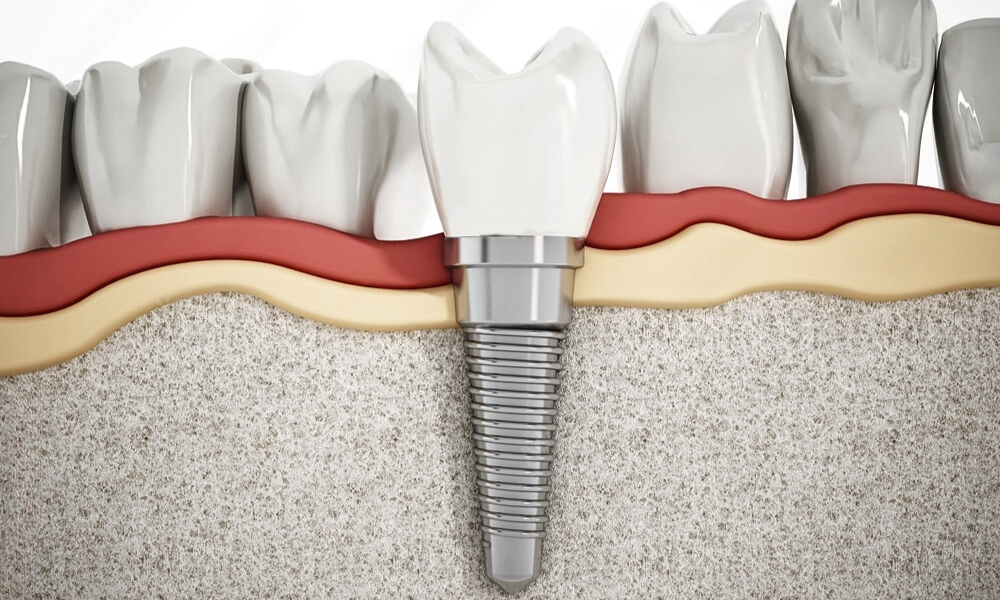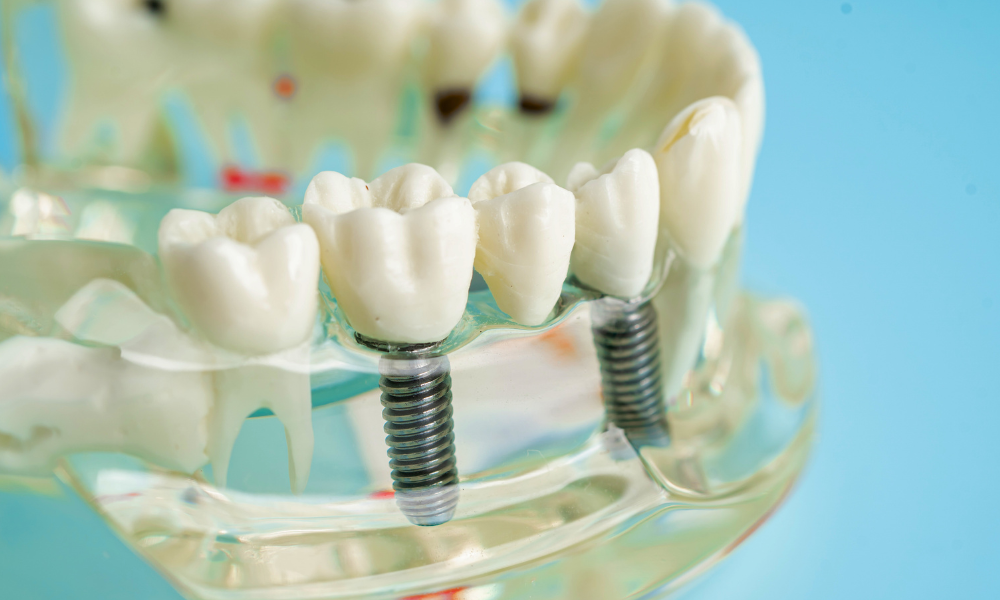
Dental implants in Newton, KS, have revolutionized modern dentistry, offering a durable and natural-looking solution to replace missing teeth. Central to the success of dental implants is understanding the dental implant healing process. This process is crucial as it determines the long-term stability and functionality of the implants in restoring oral health and enhancing smiles.
From initial placement to the final restoration, each stage of the dental implant healing journey plays a vital role. Active participation in this healing process not only ensures the implants integrate seamlessly with the jawbone but also promotes overall oral health.
This blog explores the comprehensive stages of dental implant healing, shedding light on what to expect during each phase and offering practical insights to support optimal recovery. Whether you’re considering dental implants or have recently undergone the procedure, understanding the nuances of their healing process empowers you to make informed decisions and maintain confidence in your dental health journey.
What Are Dental Implants?
Dental implants in Newton, KS, are sophisticated dental prosthetics designed to replace missing teeth permanently. They consist of three primary components:
- Implant Fixture: A titanium screw surgically placed into the jawbone, acting as the root of the replacement tooth.
- Abutment: A connector piece that joins the implant fixture to the prosthetic tooth or crown.
- Prosthetic Tooth: The visible part of the implant, customized to match the natural teeth in shape and color.
Types of dental implants commonly used include:
- Endosteal Implants: Placed directly into the jawbone, these are the most common type.
- Subperiosteal Implants: Mounted on top of the jawbone but beneath the gum tissue, suitable for patients with minimal bone height.
Stages of the Dental Implant Healing Process
The healing process of dental implants occurs in several distinct stages, each crucial for the successful integration of the implant into the jawbone:
Initial Healing After Implant Placement
- Immediate Postoperative Period: The first few days involve managing any discomfort or swelling, typically managed with prescribed pain relievers and following post-operative care instructions.
- Formation of Blood Clot: A blood clot forms at the surgical site, crucial for healing and protecting the implant site.
Osseointegration: Definition and Significance
- Definition: Osseointegration refers to the process where the implant fixture integrates with the surrounding jawbone tissue.
- Timeline: It typically takes several months (3-6 months) for osseointegration to complete, during which the bone cells grow and adhere to the implant’s surface.
- Significance: This stage determines the stability and longevity of the implant, providing a strong foundation for the prosthetic tooth.
Soft Tissue Healing around the Implant
- Gum Adaptation: The gums heal and adapt around the implant abutment, ensuring a tight seal and aesthetic appearance.
- Final Restoration: After osseointegration, Dr. Bo Davidson attaches the prosthetic tooth or crown to the implant abutment, completing the restoration process.
- Monitoring: Regular follow-up visits allow us to monitor healing progress and ensure the implant’s success.
Timeline of Healing
Immediate Post-Operative Care and Instructions
- Managing Discomfort: Patients are advised to take prescribed pain medications as directed to alleviate discomfort.
- Dietary Restrictions: Soft foods and liquids are recommended initially to avoid disrupting the implant site.
- Oral Hygiene: Gentle brushing and rinsing with prescribed mouthwash help maintain oral hygiene without disturbing the surgical area.
- Follow-Up: Scheduled appointments ensure the surgical site is healing properly and any concerns are addressed promptly.
Weeks 1-6: Osseointegration Phase and Monitoring
- Osseointegration Definition: This phase involves the implant fixture bonding with the jawbone, a process critical for stability.
- Healing Progress: Regular check-ups allows Dr. Bo Davidson to monitor healing and ensure no complications arise.
- Activity Limitations: Patients are advised to avoid strenuous activities that could affect healing and to maintain a healthy diet to support bone growth.
- X-rays and Assessments: Imaging techniques may be used to assess the integration progress of the implant into the jawbone.
Months 2-6: Maturation and Stabilization of the Implant
- Finalizing Prosthetic: Once osseointegration is confirmed, the dentist begins the process of attaching the prosthetic tooth or crown to the implant abutment.
- Adjustments: Fine-tuning the prosthetic ensures proper fit and bite alignment for optimal comfort and function.
- Follow-Up Care: Regular dental visits allow Dr. Bo Davidson to continue to monitor the implant’s stability and overall oral health.
- Long-Term Maintenance: Patients are educated on ongoing care practices, including regular brushing, flossing, and professional cleanings to maintain oral health and prolong implant lifespan.
Common Symptoms and Side Effects
Pain and Discomfort Management
- Medications: Prescribed and over the counter pain relievers help manage discomfort post-surgery.
- Cold Compress: Applying ice packs to the face reduces swelling and numbs the area.
- Rest: Adequate rest aids in recovery and minimizes discomfort.
- Avoidance of Hard Foods: Eating soft foods prevents irritation at the surgical site.
Swelling and Bruising: What to Expect
- Normal Reactions: Mild to moderate swelling and bruising around the implant site are common.
- Duration: Typically peaks within the first 48 hours and gradually subsides.
- Home Remedies: Elevating the head while resting and applying cold compresses reduces swelling.
- Consultation: Contact the office if swelling worsens or persists longer than expected.
Potential Complications and How to Address Them
- Infection: Signs include increased pain, redness, or discharge; prompt treatment with antibiotics is crucial.
- Implant Failure: Rare but possible due to improper osseointegration or infection; immediate consultation is necessary.
- Nerve Damage: Symptoms include tingling or numbness; contact the office promptly.
- Excessive Bleeding: Applying pressure to the area with gauze and seeking immediate dental care if bleeding persists.
Tips for Promoting Healing
Promoting healing after dental implant surgery is crucial for successful outcomes. Here are essential tips to facilitate recovery:
- Post-operative Care: Follow recommended guidelines diligently, including prescribed medications and activity restrictions.
- Dietary Considerations: Opt for soft, nutritious foods to minimize chewing strain and support healing.
- Oral Hygiene: Maintain meticulous oral hygiene with gentle brushing and rinsing using prescribed solutions to prevent infection.
- Avoidance of Irritants: Steer clear of smoking, alcohol, and vigorous rinsing to promote optimal healing conditions.
- Regular Monitoring: Attend follow-up appointments to ensure healing progress and address any concerns promptly.
Understanding the dental implant healing process is crucial for anyone considering this procedure. With proper care, including post-operative guidelines and monitoring, patients can promote successful recovery and enjoy the benefits of restored oral health and function.
Schedule an implant consultation with Dr. Bo Davidson at Newton Dental Studio today and learn more about the healing process of dental implants.


